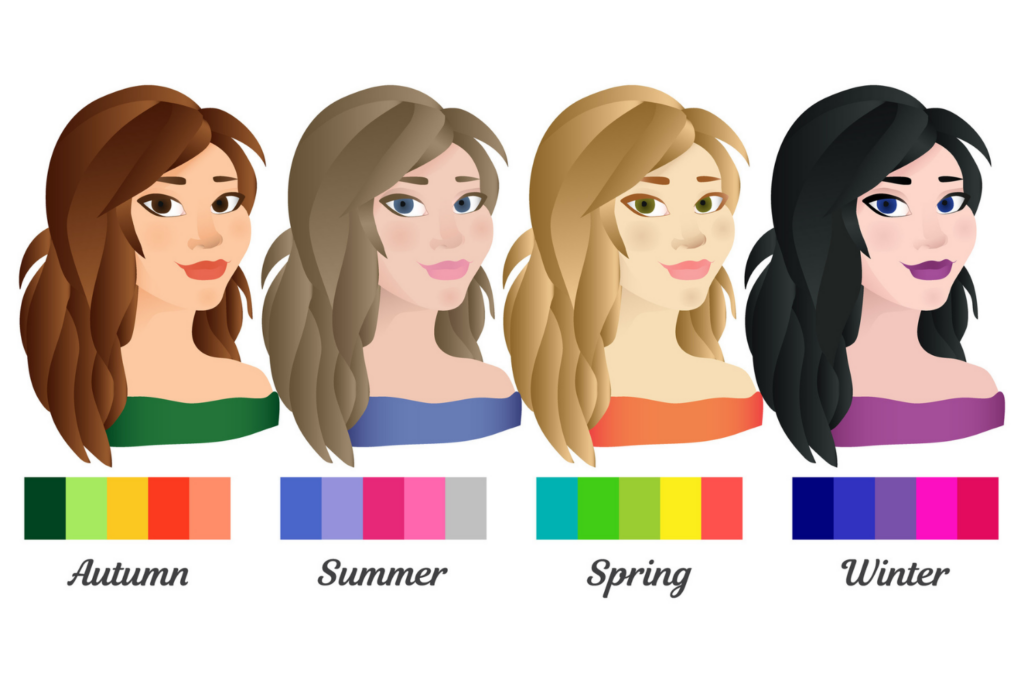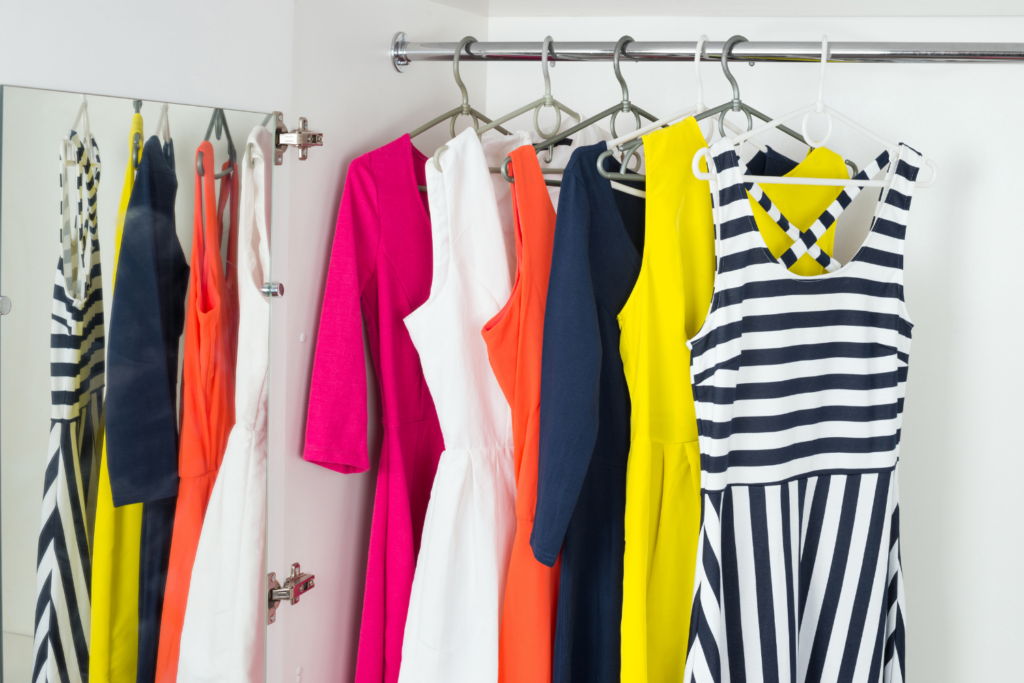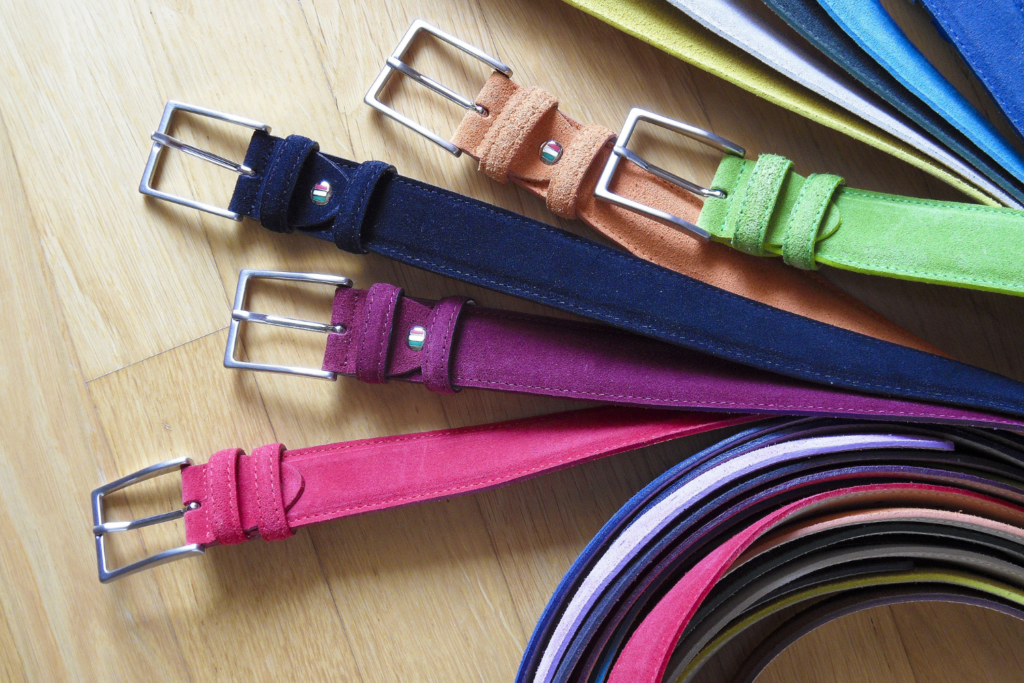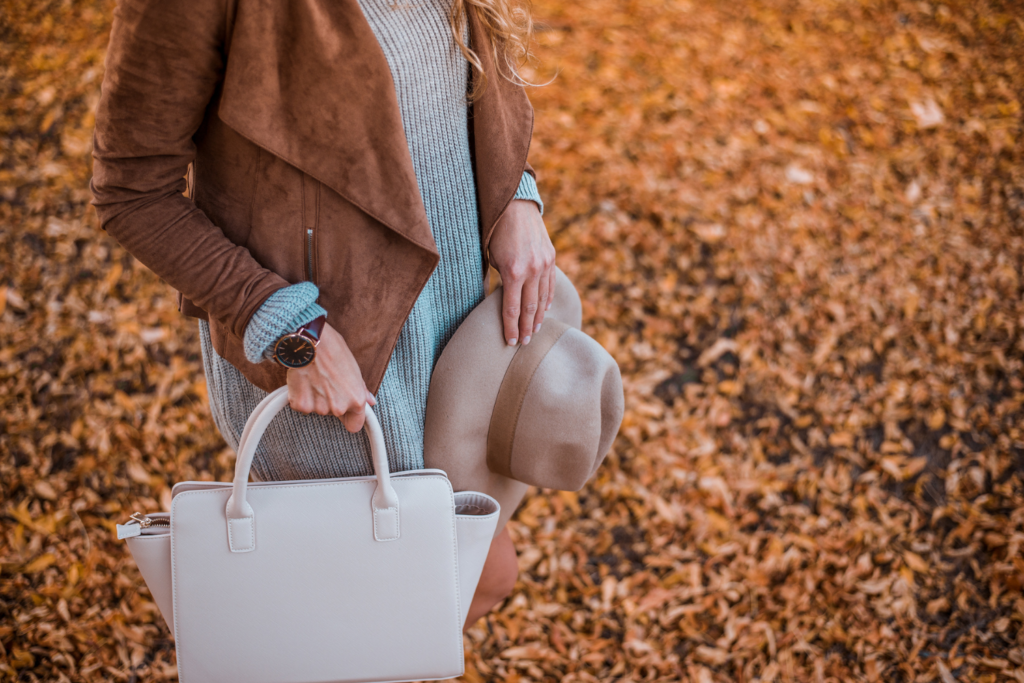Most people just know that some colors “suit them” and other colors do not, but it took a best-selling book published back in the 1980s by Carol Jackson called Color Me Beautiful that popularised the idea that individuals should stick to certain families of color that suited their skin and hair tones, to look their best.
The basis of this theory was that some people have warm skin and hair tones, such as redheads, and others have cool skin and hair tones, such as raven heads. Within these warm and cool categories, there were further divisions, based on intensity. Color Me Beautiful gave them the names of seasons for picturesque reasons (it was easy for their readers to imagine), with Spring and Autumn being the two warm groups, and Summer and Winter being the two cool groups.
Jackson said that if you wore something that wasn’t in your group, the color of the clothing clashed so badly with your natural coloring, as to jar and make you look bad. It’s easy to see what she is getting at with examples: Drew Barrymore (my girl crush) is a Drew Barrymore has a soft autumn color palette while Beyonce Knowles is a classic autumn with warm honey-toned skin and hair. She looks her best in warm colors – golds, oranges, yellows, indeed she is one of the few people who can wear orange successfully. But put her in dark purple, and the effect is harsh and jarring.
How do you discover what your “season” is? Mainly through observation and trial and error. Most colorists will sit you down in bright daylight in front of a mirror and will drape scarves around you to find out which palate suits you. The rough rule of thumb is that people with cool skin tones have a blue, pink, or blue-pink undertone to their skin, and people with warm skin tones have a golden or orange undertone to their skin.
Do be careful to judge intensity as well as color when you are trying to come up with a palate that suits you. Some people with black hair and white skin can wear the palest pinks successfully, but change the skin tone to a darker Mediterranean one, and while they are still in the cool category, they need a deeper palate to look their best.
One clue that you’ve got it right is that people who look at you don’t say “you look nice” but “you look well” or “you look healthy” – in other words, they don’t notice the clothes, they notice you. There is no better compliment than to be thought to be blooming with health.
One thing that comes out of analyzing which colors it is suitable to wear, is how difficult it is to wear the extremes of the spectrum – white and black. Practically every bride has tried on a white dress and recoiled from the mirror and then chosen an off-white color wedding dress with either a bluish or creamy undertone. The difficulty in wearing pure white is one of the reasons hardly anyone wears it.
The wearing of black is ubiquitous though, in spite of the fact that very few people look well in it (even those with a cool coloring struggle with it). I think this is a result of the fashion industry brainwashing the public that wearing black is “cool”. Note however that in France, most Frenchwomen choose to wear a more forgiving dark navy, rather than black – navy doesn’t drain the color from your face in the same way, while still being a “serious” color, and suitable for work clothes.
Do note that colors look different on the printed page or the screen than they do on actual cloth. That’s why it is best to actually go to a store and try the clothes on (and view yourself in bright daylight) rather than pick clothes from catalogs.
The tones in the catalog pictures may be misleading and it can make the difference between you looking fantastic and you looking ill and drawn. If in doubt try things on.
Look at the images below to do a color analysis of yourself by choosing the season image that best represents yourself.







